We test and review fitness products based on an independent, multi-point methodology. If you use our links to purchase something, we may earn a commission. Read our disclosures.
I can’t remember the last time that there wasn’t a workout challenge trending on social media. The 28-Day Wall Pilates Challenge is one of the most recent examples that jumps to mind, but in the past, I’ve seen plenty of others (such as the 75 Hard Challenge and the 30-Day Ab Challenge).
Currently, it seems that the most popular is the 28-Day Calisthenics Challenge. Calisthenics is a bodyweight workout that can help you build muscle and burn fat from anywhere because it requires no equipment, unlike traditional resistance training, where you’ll need barbells, dumbbells, or kettlebells.
I’ll start this guide by explaining what calisthenics is. Then, I’ll go through exactly what the 28-Day Calisthenics workout plan involves and how you can get started. I’ll even share a sample workout program based on my experience as a certified personal trainer.
So, if you want to build full-body strength, look no further!
What Is Calisthenics?
Calisthenics is a form of strength training. But, instead of using equipment such as barbells, dumbbells, kettlebells, fixed resistance machines, and more, you mainly use your body weight (and gravity). Popular calisthenics exercises include pull-ups, push-up variations, dips, squat variations, burpees, planks, lunges, L-sits, and more—you’ll see all these movements in my sample workout below.
What Is The 28-Day Calisthenics Challenge?
With the 28-Day Calisthenics Challenge, you’ll do calisthenics daily for 28 days—no rest days! Because there are various programs you can try aimed at different fitness levels, finding one you can stick to is crucial for your success.
Each workout is between 10 and 30 minutes long, and should include a warm-up to lower the risk of injury and improve physical performance1.
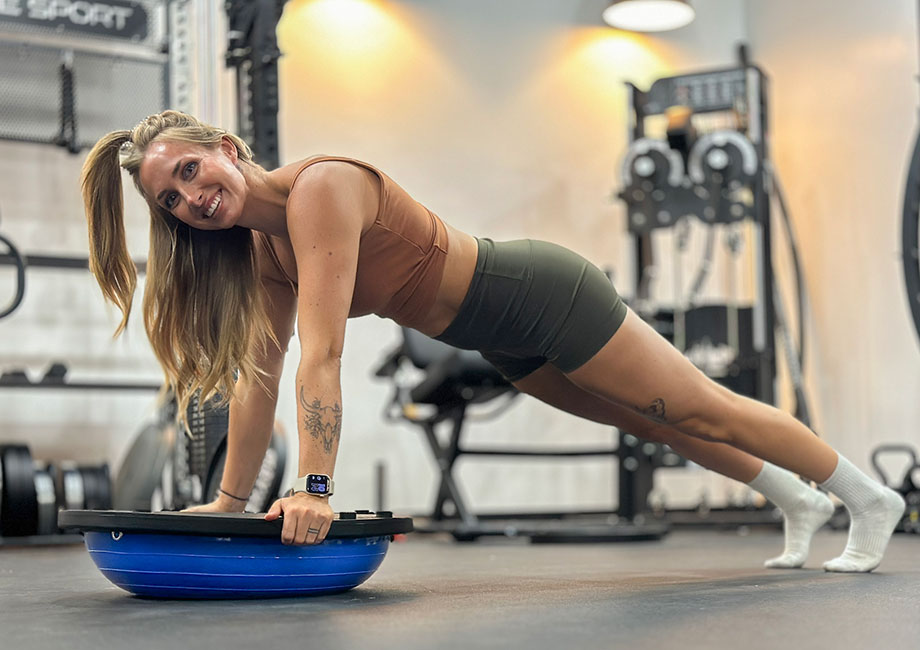
Need help deciding which calisthenics workout routine to go with? Although there are several across social media, I’ve made it easy for you because—as a certified personal trainer (CPT)—I’ve designed my own 28-Day Calisthenics Challenge below.
How To Get Started With The 28-Day Calisthenics Challenge?
To get started with the 28-day calisthenics challenge, below are a few tips to set you up for success:
- Decide what time you’ll exercise. It’s easier to stick to a fitness challenge if you exercise at the same time every day. Regardless of whether it’s first thing in the morning before work, or once the children are in bed at night, decide on a time that works for you.
- Create enough space. If you’re going to exercise at home, you’ll need enough space. You might have this already, but if not, spend some time re-organizing a few things so that you can comfortably work out.
- Find the best calisthenics challenge for your fitness level. Depending on your fitness level, you’ll want to find challenging calisthenics workouts. At the same time, you don’t want them to be so intense that you end up not wanting to do them.
- Ensure that you know how to do each exercise correctly. Every version of the 28-Day Calisthenics Challenge will have a variety of exercises. You’ll know some of them, but others you won’t. Spend some time before each workout learning how to do the exercises correctly.
- Eat and hydrate properly. To make the most out of your workouts, you need to eat properly and drink plenty of water. If you’re unsure what to eat before exercise, see our guide on the best pre-workout food.

Sample 28-Day Calisthenics Program
Here’s my 28-Day Calisthenics home workout:
Day 1
3 rounds of:
- 10 push-ups
- 15 bodyweight squats
- 12 leg raises
- 30 sec. high knees
- 30 sec. planks
Day 2
3 rounds of:
- 8 inverted rows
- 12 forward lunges
- 12 mountain climbers
- 10 inchworms
- 15 glute bridges
Day 3
3 rounds of:
- 8 dips
- 12 skater jumps
- 30 sec. side planks, each side
- 12 reverse lunges
- 30 sec. tuck jumps
Day 4
3 rounds of:
- 8 chin-ups
- 10 diamond push-ups
- 20 step-ups
- 30 sec. L-sits
- 10 burpees
Day 5
3 rounds of:
- 8 pull-ups
- 12 split squats
- 10 pike push-ups
- 30 sec. star jumps
- 30 sec. bicycle crunches
Day 6
3 rounds of:
- 12 inverted rows
- 30 sec. jumping lunges
- 10 single-leg deadlifts
- 30 sec. flutter kicks
- 30 sec. Bear crawls
Day 7
3 rounds of:
- 12 dips
- 10 box jumps
- 30 sec windshield wipers
- 10 Bulgarian split squats
- 30 sec. butt kickers
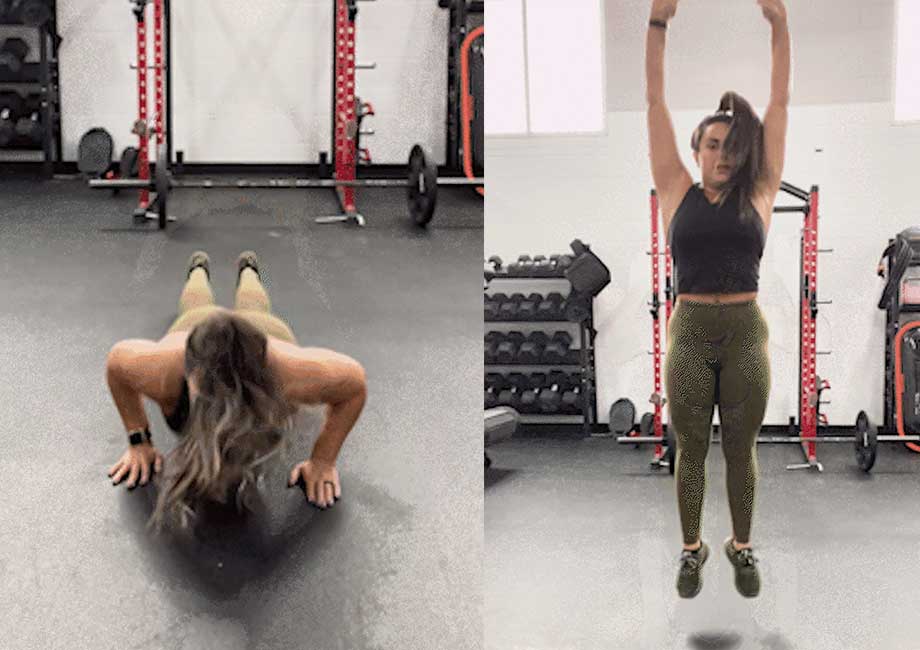
| Day 8: Repeat Day 1 |
Day 9: Repeat Day 2 |
Day 10: Repeat Day 3 |
Day 11: Repeat Day 4 |
Day 12: Repeat Day 5 |
Day 13: Repeat Day 6 |
Day 14: Repeat Day 7 |
| Day 15: Repeat Day 1 |
Day 16: Repeat Day 2 |
Day 17: Repeat Day 3 |
Day 18: Repeat Day 4 |
Day 19: Repeat Day 5 |
Day 20: Repeat Day 6 |
Day 21: Repeat Day 7 |
| Day 22: Repeat Day 1 |
Day 23: Repeat Day 2 |
Day 24: Repeat Day 3 |
Day 25: Repeat Day 4 |
Day 26: Repeat Day 5 |
Day 27: Repeat Day 6 |
Day 28: Repeat Day 7 |
After each exercise, go straight to the next exercise if you can. If you’re unable to do this, take a short rest (10 to 30 seconds) before moving on. Once a round is complete, rest for between one and three minutes before doing another. If you’re a beginner and completing three rounds is too difficult, do one or two instead.
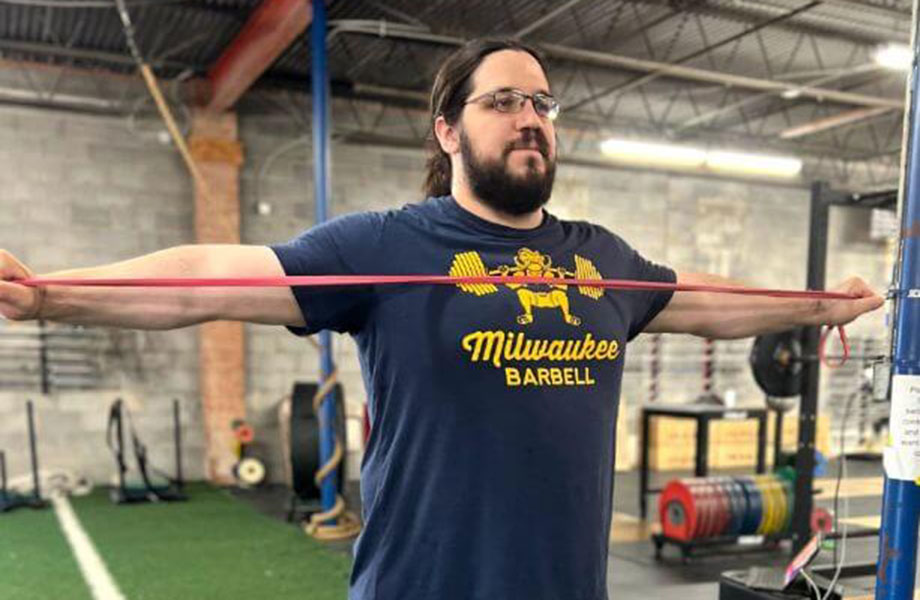
Before you start each workout, perform light cardio and dynamic warm-up exercises. For example, do five minutes on the treadmill or elliptical if you have one. If not, use a jump rope to warm up the body, then do exercises such as jumping jacks, arm circles and swings, leg swings, resistance band pull-aparts, and more.
Who Should Do The 28-Day Calisthenics Challenge?
Who is the 28-Day Calisthenics Challenge for? And more importantly, who should take caution? From my experience as a CPT, try the calisthenics total-body challenge if:
- You’re a beginner: As a beginner, I believe it’s important to learn functional movements such as squats, push-ups, lunges, and more, and that’s exactly what you’ll get here.
- You’re limited on time: Each workout is between 10 and 30 minutes long and you can do them from the comfort of home.
- You don’t like gym environments: I get that the gym environment isn’t for everyone. If this is you, build strength and reap the benefits of exercise from anywhere.
- You’re bored with your current routine: Hit a plateau with your current routine? Switch it up and do the 28-Day Calisthenics Challenge, then go back to your previous workout routine with fresh motivation.
- Your goal is to lose weight: Although being in a calorie deficit is the most important aspect of weight loss, exercising helps to burn calories.
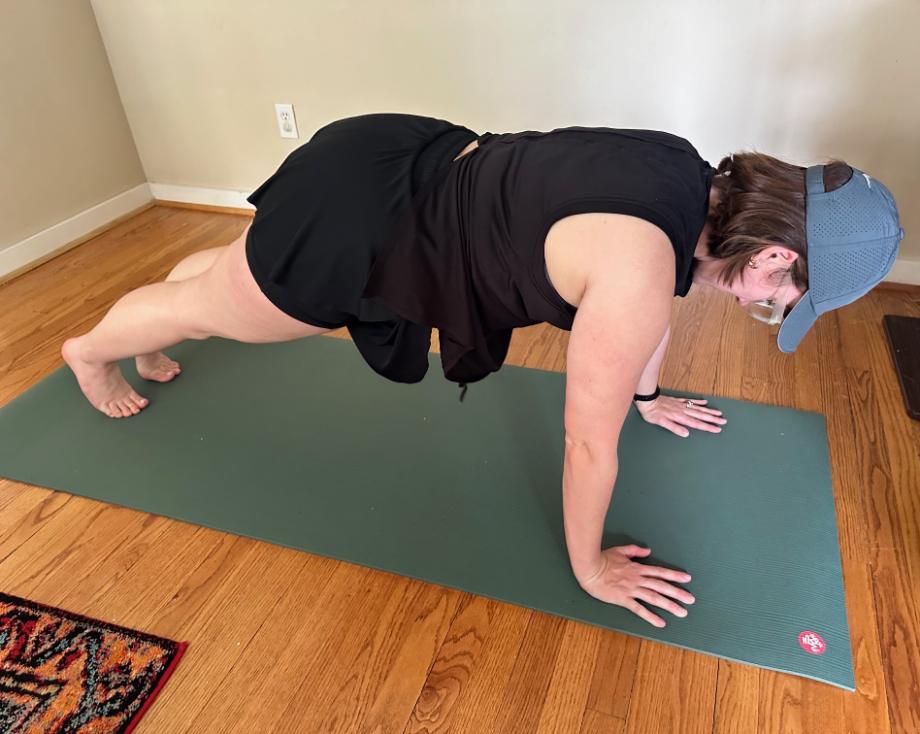
However, take caution if you’re any of the following:
- Pregnant
- Recovering from a serious injury
- Haven’t exercised in a long time
- Have a heart condition
- Have arthritis or other joint problems
What Are The Benefits Of Calisthenics?
If the 28-Day Calisthenics fitness challenge sounds like something you want to try, I’m pleased. Before you do, however, below are three benefits of calisthenics to keep you motivated:
Helps Increase Your Strength
A 2018 Journal of Strength and Conditioning Research2 randomized controlled trial found that “Calisthenics, using different progressive variations to maintain strength training programming variables, can improve upper-body muscle strength.” The same applies to your lower body. With calisthenics training, more difficult progressions of exercises are always available, which means you’ll never stop building your strength.
Requires No Equipment
I love weightlifting in a gym environment. As a certified personal trainer (CPT), however, I appreciate that being in a gym and having a costly gym membership isn’t for everyone. Because calisthenics requires little to no equipment, it can be done from anywhere. You can do it at home, in the park, or while traveling.
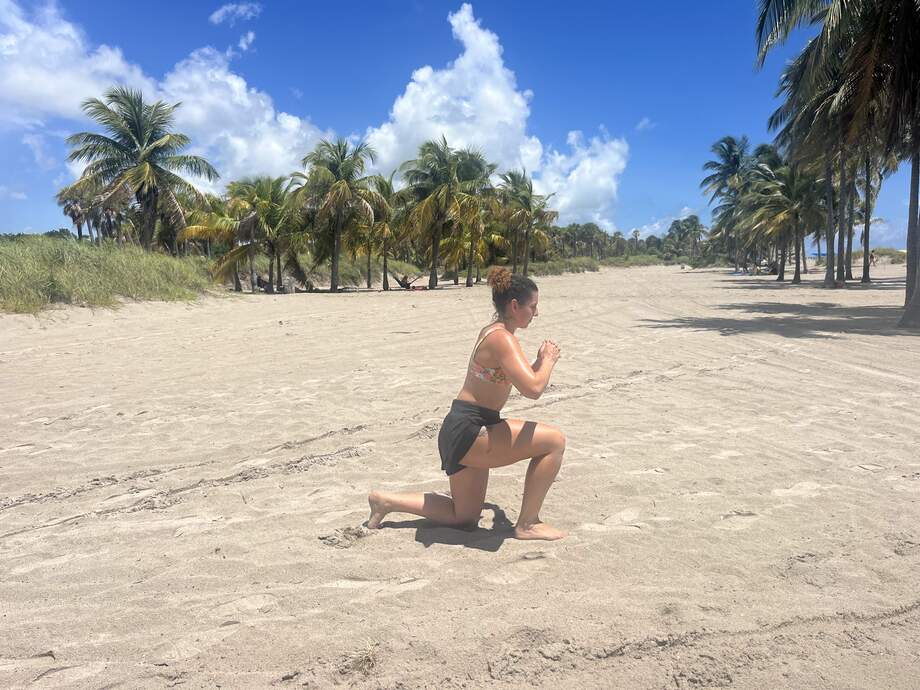
Helps Enhance Your Mental Health
Exercising helps to reduce stress and improve your mood by releasing endorphins (aka your body’s “feel-good” chemicals) into your body. When you perform bodyweight exercises such as those seen in calisthenics training, you reap these mental health benefits.
Not only this, but randomized controlled trials3 have found that “The positive effects of [calisthenics] exercises on neurologic and rheumatic chronic inflammatory processes associated with disability should not be underestimated.”
28-Day Calisthenics Challenge: Final Thoughts
There is no shortage of fitness challenges on social media, but the most current trend is the 28-Day Calisthenics Challenge. Calisthenics is a form of strength training, but unlike traditional resistance training, it doesn’t require barbells, dumbbells, fixed resistance machines, kettlebells, and more. All you need is your body weight.
Partaking in a 28-Day Calisthenics Challenge can help increase your strength and mental health. This fitness challenge is ideal for you if you’re a beginner, are limited on time, don’t enjoy gym environments, are bored with your current routine, or your goal is weight loss. If you’re still unsure about it, give it a try—what’s the worst that could happen?
28-Day Calisthenics Challenge: FAQs
Does the 28-Day Calisthenics Challenge actually work?
Yes, the 28-Day Calisthenics Challenge actually works. The goal of fitness challenges such as this one is to help you form healthy habits by providing a structured plan for a short period. With this calisthenics challenge, you know exactly what to do for 28 days. I’m certain that following it will help increase your strength, enhance your mental health, improve your confidence, and more.
However, it doesn’t stop there. Once the 28 days are up, you must continue exercising to reap the long-term benefits of exercise. This doesn’t have to be calisthenics—although it can be. It’s important to find something that you enjoy and can stick to.
How long does it take to see results from calisthenics?
You can see some results from calisthenics in as little as 28 days by following a 28-Day Calisthenics Challenge. A workout challenge such as this is designed to be intense because you do bodyweight exercises every day for 28 days. To see the long-term results from calisthenics, you’re likely going to need several months—if not years.
Is 20 minutes of calisthenics enough?
As a certified personal trainer (CPT), I’d say that 20 minutes of calisthenics is usually enough. This is especially true if you’re doing calisthenics in a high-intensity interval training (HIIT) format with minimal rest between exercises. If you prefer longer rest periods, you may need to do slightly more than 20 minutes of calisthenics every workout to make the most of it.
The number of workouts you perform each week and your fitness goals are also important factors. If you can only manage one to three workouts per week, you may need to do more than 20 minutes of calisthenics. However, if you exercise more often than this, 20 minutes is plenty. Those with bigger fitness goals may need calisthenics sessions longer than 20 minutes.
Are calisthenic apps any good?
In our best online workout programs review, we described the pros and cons of eight fitness apps, including some for calisthenics. I don’t use apps myself—I’m old school and prefer pen and paper!—but I can see why people would enjoy using them. Take a look at some calisthenics apps for yourself and see if they’re something you could benefit from.
References
- Fradkin AJ, Zazryn TR, Smoliga JM. Effects of warming-up on physical performance: a systematic review with meta-analysis. J Strength Cond Res. 2010 Jan;24(1):140-8. doi: 10.1519/JSC.0b013e3181c643a0. PMID: 19996770.
- Kotarsky CJ, Christensen BK, Miller JS, Hackney KJ. Effect of Progressive Calisthenic Push-up Training on Muscle Strength and Thickness. J Strength Cond Res. 2018 Mar;32(3):651-659. doi: 10.1519/JSC.0000000000002345. PMID: 29466268.
- Taspinar O, Aydın T, Celebi A, Keskin Y, Yavuz S, Guneser M, Camli A, Tosun M, Canbaz N, Gok M. Psychological effects of calisthenic exercises on neuroinflammatory and rheumatic diseases. Z Rheumatol. 2015 Oct;74(8):722-7. doi: 10.1007/s00393-015-1570-9. PMID: 26115762.
Further reading

Looking for a meal delivery service specially designed for your little ones? Find out if this one is right for you with our Little Spoon reviews! Read more

The Run Rocket is a Sprint Resistance Trainer that allows you to add resistance to forward movement such as sprints, sled drags, broad jumps, and more. After using and testing the Run Rocket over 60 days with athletes of all levels, we can confidently say the Run Rocket is effective at increasing sprint speed, jump height, and more. We give a high recommendation. Read more

The new Rogue Ohio Bar 2.0S just dropped, and Garage Gym Reviews is here to give you the scoop on what makes this bar so special. The newest member of the Ohio Bar variants, the 2.0S is being advertised for two new innovations: a sound-dampening sleeve structure, and a coating said to be even more corrosion-resistant than cerakote, but without the drawbacks. Read more

You’re in the middle of a WOD. It’s hot. You might redline but there’s no turning back. You’re racing against the clock and all you can think about is your achy arches and the blister forming on your heel.Yikes. That’s not what you want!You can avoid CrossFit horror stories like that by wearing the right training shoes. In my NOBULL Training shoes review, I’ll let you know if these popular—but controversial—workout shoes are the right choice for you. Why You Should Trust UsWe wrote the most comprehensive guide to the best CrossFit shoes you’ll probably find anywhere on the internet. Aside from that, myself and our product testers have years of experience in the fitness industry and have personally worn most of the CrossFit shoes on the market, from the original Reebok Nanos all the way to the Nike Metcon 7s and the Reebok Nano X1s. Read more
